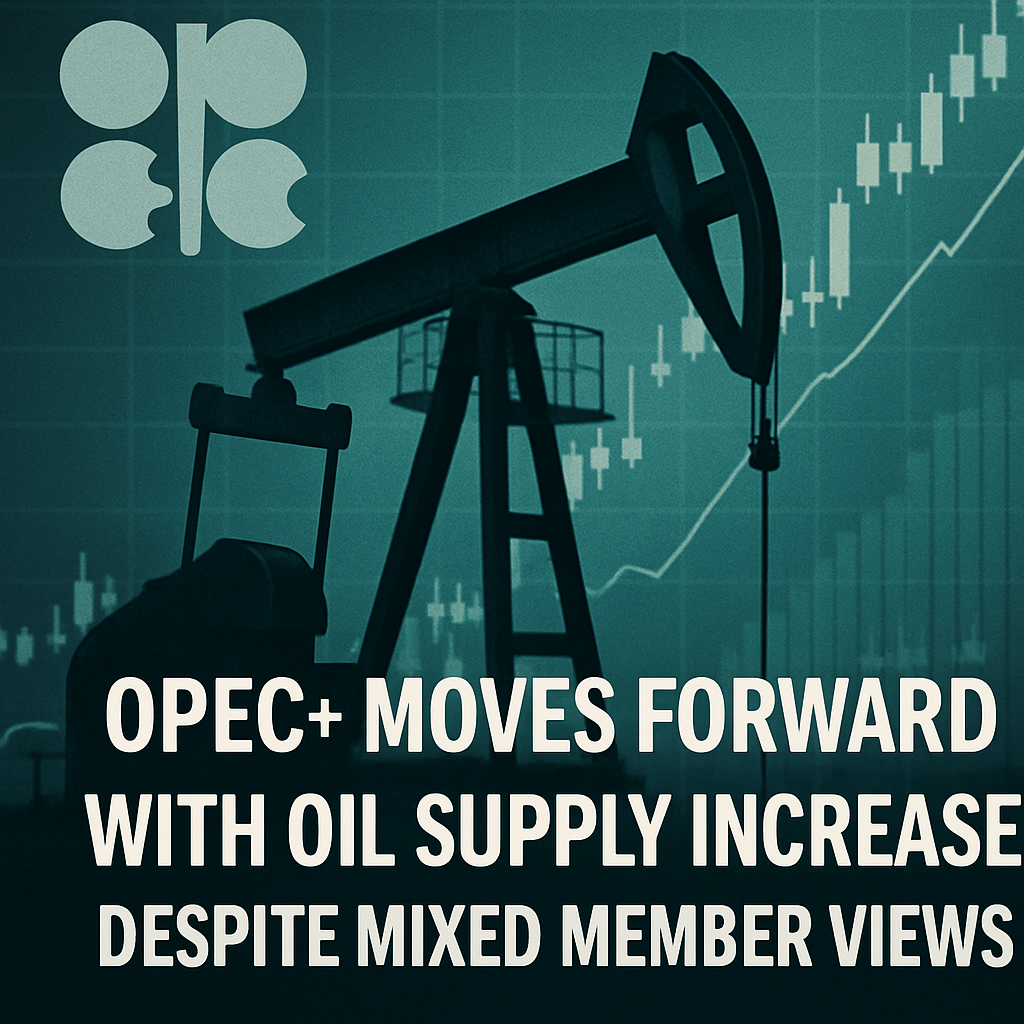OPEC+ Moves Forward with Oil Supply Increase Despite Mixed Member Views

In a significant move underscoring a policy shift, OPEC+ has agreed to increase oil output for the third consecutive month, despite notable dissent from key member Russia. This strategy aims to inject an additional 411,000 barrels per day into the global oil market starting July, aligning with similar increases rolled out in May and June, as per a statement released during a virtual meeting of the group on Saturday.
Fundamental Shift in OPEC+ Strategy
This decision constitutes a pronounced deviation from OPEC+’s traditional approach of managing supply to stabilize or elevate crude prices. The group’s willingness to expand output stems from a confluence of factors, including a desire to solidify market share lost to US shale producers, address rampant overproduction issues among certain members, and even respond to external pressures such as the push for lower oil prices voiced by former US President Donald Trump.
“OPEC+ isn’t whispering anymore,” remarked Jorge Leon, an analyst at Rystad Energy A/S. “May hinted, June spoke clearly, and July came with a megaphone.”
Officials indicate that the latest supply increments are particularly punitive towards nations like Kazakhstan and Iraq, which have been exceeding their production quotas. These strategies are designed to reinforce discipline among cartel members and mitigate the effects of supply-demand mismatches that could impact global oil pricing.
Member Dissent: A Divided Alliance
During the OPEC+ meeting, several member nations, including Russia, Algeria, and Oman, voiced concerns over the pace of production increases. This indicates a disconnect among the cartel’s most influential members; while Saudi Arabia pushes for higher output, other key players are advocating for a more cautious approach. The divergence in strategy is expected to be reapplied during the next meeting on July 6, where discussions will revisit output levels for August.
The backdrop to this discord includes a pivotal concern regarding a global supply surplus, which led to a steep decline in oil prices earlier this year. In April, Brent crude saw prices plummet to under $60 a barrel—its lowest level in four years—following earlier announcements by OPEC+ to dramatically increase output, despite lingering global demand weaknesses exacerbated by geopolitical tensions and trade skirmishes.
The Market’s Response and Future Implications
Despite the initial adverse reactions, Brent futures have recently traded around $64 a barrel. However, analysts express skepticism about future price stability. The International Monetary Fund has reported that Saudi Arabia requires prices to exceed $90 a barrel to balance its significant budgetary commitments, tied closely to ambitious projects under Crown Prince Mohammed bin Salman’s Vision 2030 initiative.
Investment Strategies under Scrutiny: Some experts, such as Giovanni Staunovo from UBS Group AG, maintain that the market’s interpretation of OPEC+’s latest agreement is cautiously optimistic, noting that concerns of larger production increases were afoot leading into the discussions. However, analysts also warn that a sustained influx of supply could deepen price declines in the latter part of the year.
Looking Ahead: Seasonal Demand Dynamics
As the northern hemisphere braces for peak summer demand, OPEC+’s strategy to increase supply appears aligned with anticipated market dynamics, particularly in the United States and the Middle East that typically see higher consumption during warmer months.
Amrita Sen, Director of Research at Energy Aspects Ltd, has pointed out that current fundamentals are advantageous for adding more barrels into the market given that inventories are at historic lows. Yet the long-term outlook remains complicated, with forecast models from JPMorgan Chase projecting that Brent prices could fall into the “high $50s” as expanded production leads to a surplus exceeding 2 million barrels a day.
Conclusion: A Balancing Act
As OPEC+ navigates these turbulent waters, the coalition must balance member compliance, market stability, and external economic pressures. Moving forward, there is likely to be heightened scrutiny on the effectiveness of the cartel’s strategies as it seeks to balance supply increases against the looming specter of oversupply and price drops.